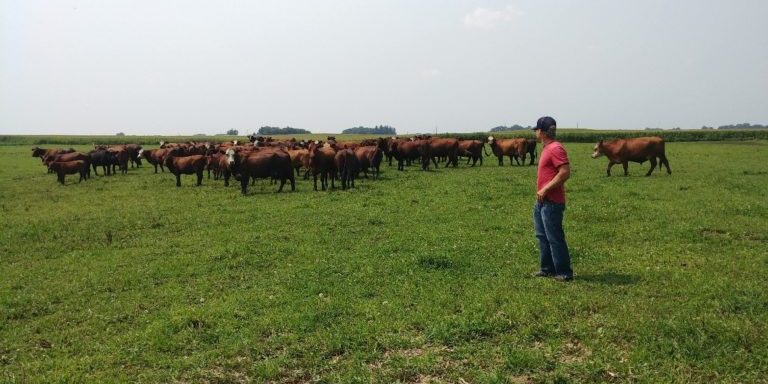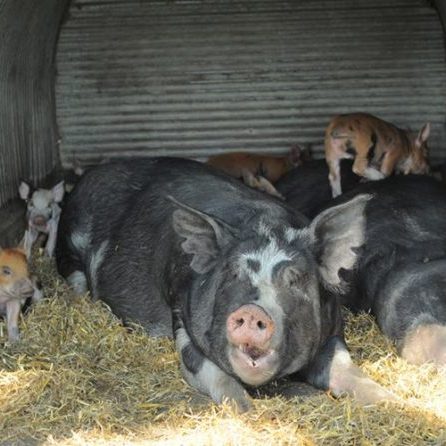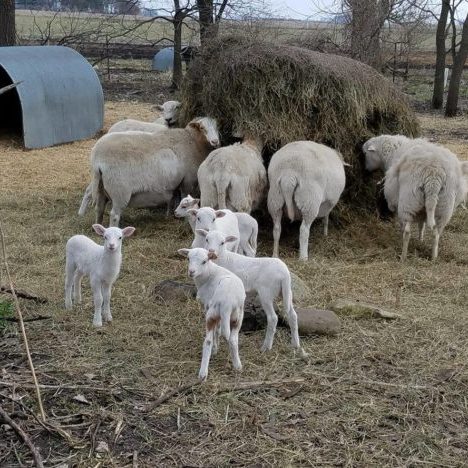
Cicadas hum in the walnut and cottonwood trees of the farm. Seeking shelter from the noonday sun, a Black Angus bull bellows, making himself known. Red and black piglets avoid the steamy Minnesota summer day by dashing between the cool barnyard and inviting shade trees.
This barnyard is the “office” of Cazzi Wacholz in Hayward, Minnesota. Located in the heart of south central Minnesota, near to Albert Lea and the Iowa border, the pastures of Wacholz Farm are unique on a landscape that traditionally grows row crops like corn and soybeans. Pastured cattle, hogs, and lamb haven’t always been the focus of this 110 year old family farm. When Cazzi returned to his grandparent’s dairy farm nine years ago, he was inspired to try a new style of farming. When Cazzi’s girlfriend, Evelyn Monteiro, began leading Wacholz Farm’s marketing efforts this past year, Cazzi was able to find even more time to focus on farm management.
At the heart of Wacholz Farm is a focus on creating high quality, grassfed meat for customers by giving the animals that will become that meat as healthy of a life as possible. Cazzi attributes his animals' good health to the variety of forage options on his pastures, and he works hard to provide a wide variety of perennial and annual plants that his cattle, hogs, and sheep will enjoy grazing on. Just a few of these plants include white and red clovers, tall fescue, Italian rye grass, oats, rye, millet, and turnips. “By having such a wide variety, the animals adjust what they eat based on their nutritional needs. If they eat more of one type of plant now, they adjust and eat other types later,” says Cazzi.
When choosing the species of cattle, hogs, and sheep, Cazzi carefully selects breeds that will work well in the hot summers and cold winters of Hayward, Minnesota. For example, his sheep are St. Croix and Florida Native crosses. This combination provides a heat and humidity resistant meat lamb that does not need to be shorn. With hogs, Cazzi has found that crossing heritage breeds like Berkshire and Duroc has led to sows with a stronger maternal instinct, allowing him to spend less time watching piglets closely.
Cazzi and Evelyn are proud of the accomplishments made on the farm over the past nine years, and they look forward to what the next nine will bring. “I truly think it takes 10 years to become established as a multispecies grassfed farm,” said Cazzi, as he noted how much he had to learn in the first years of transitioning the farm. Now he feels this transition has been a benefit to the farm, even in seemingly small moments: “Did you know you can actually hear worms moving after a rain? As I walk along the paths to the fields, the soil is covered in earthworms – the soil is so healthy now!”



